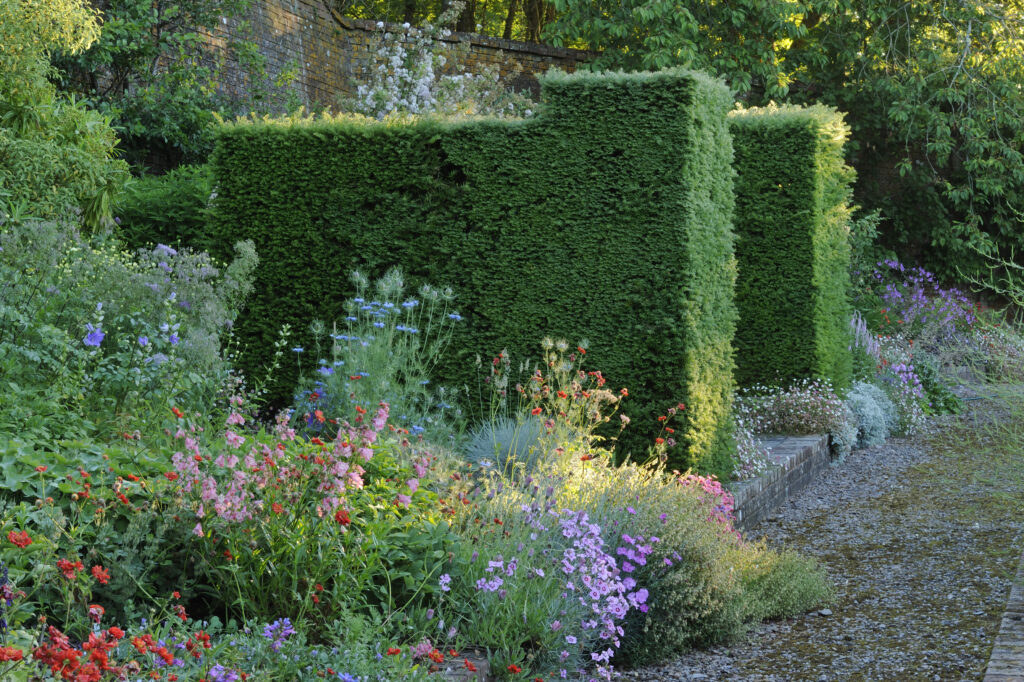the walled garden
The main feature of this very special garden has to be the wall, the double skinned wall of flint and brick surrounding three sides of the hugely productive vegetable and fruit garden. It’s a fantastic construction of hand-made, crumbling bricks and awkward flints, in need of repair and full of old nails and plant supports.

The wall keeps the deer, rabbits and wind out, provides a great framework for climbing and wall-plants, creates a micro-climate for plants within and without, radiates heat and houses families of blue-tits with squirrels using the top as a private motorway.
the lake
Feature number two must be the stream-fed lake frequented by kingfishers, canada geese, duck, grass snakes and now the otter, who, with occasional herons, keeps the golden orf under control.
The banks are planted with shrubs and moisture-loving perennials with some stretches just grassed. The duck house (no MPs here) is often used but Mrs Mallard, sadly, never stays more than twenty four hours with her brood; ducks seem to be hopeless parents.
A huge, ancient silver fir sweeps its branches down towards the water on one side, cornuses abound and a bog-garden under the weeping willow is stuffed with primulas, ligularias and irises.
the old house bed, the spring and winter gardens
These areas are full of precious and interesting shrubs, useful ground cover, bulbs (no large, vulgar daffodils here) and climbers, tier upon tier. Many of my treasures are to be found in these sheltered areas, some of my favourite to work in, where the soil is moist, rich and fertile.
the plant list – a list compiled over the years of all the plants in the garden; there are over 1,000 on it and I use it like an external hard-drive for my dwindling brain. If I didn’t like a plant there’s likely to be a sniping comment on the list and conversely praise is give where praise is due; some plants just thrive and thrill.